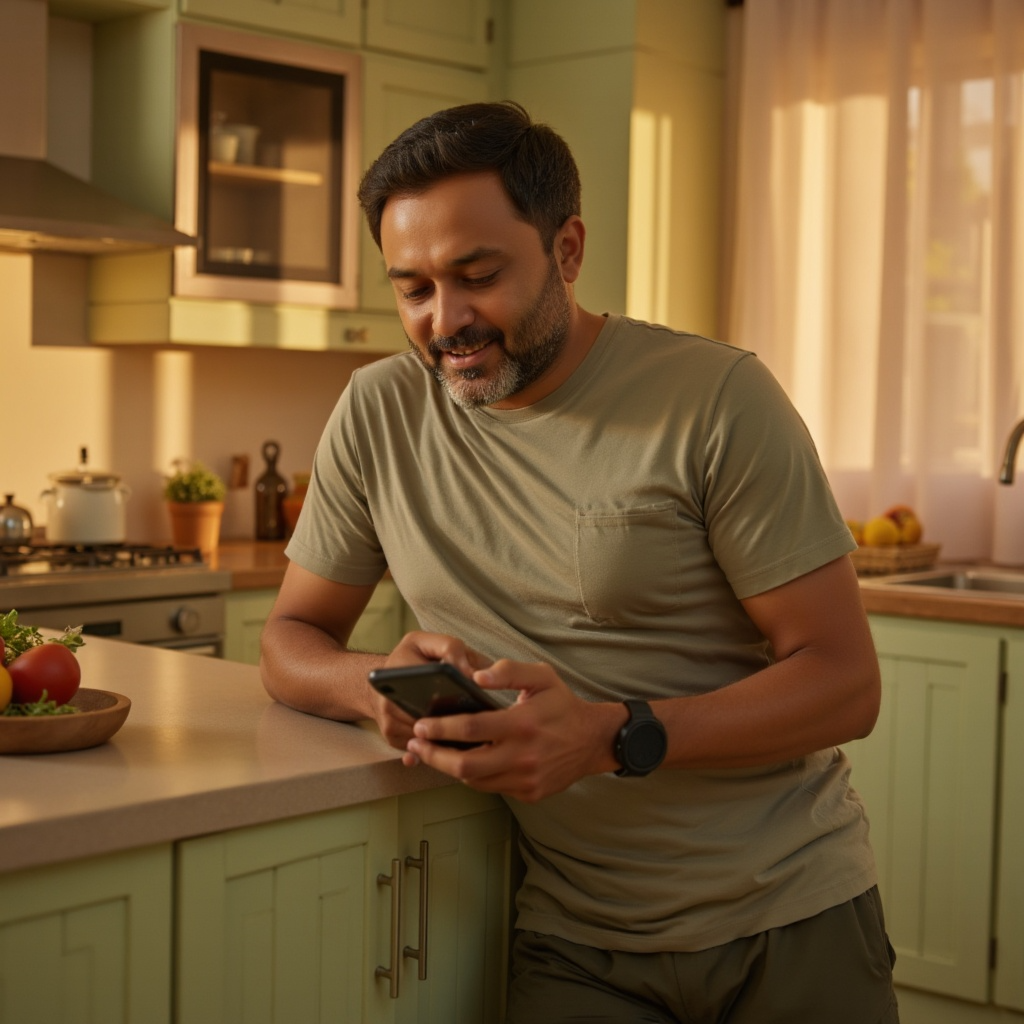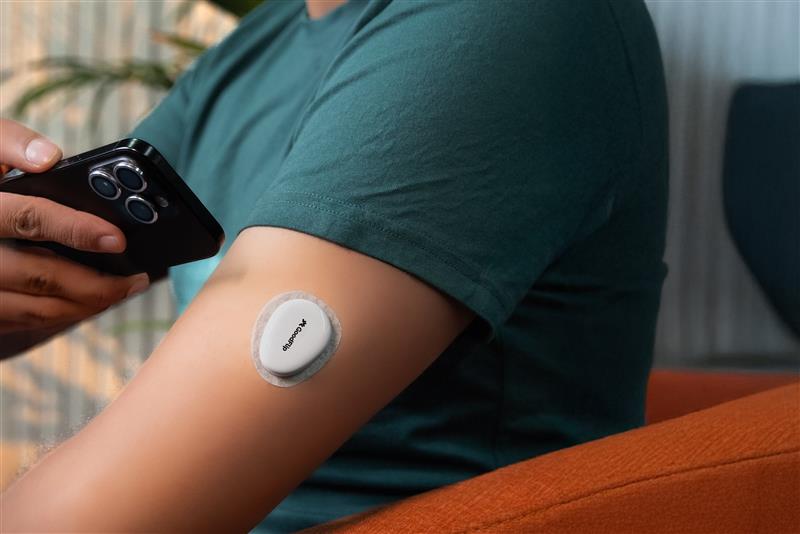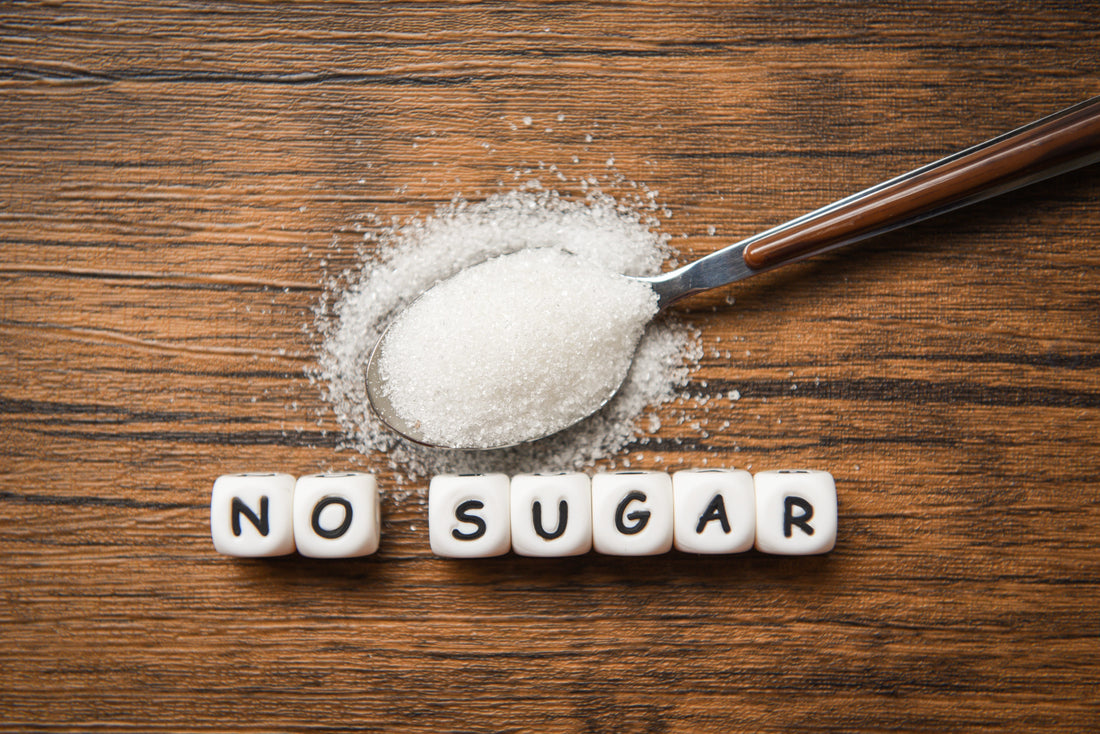Our Offerings
Struggling with weight, energy, or chronic conditions? It’s your metabolism. Let’s fix it together.
Discover the Power of Smart Technology for a Smarter Life.
Boost Your Metabolism and Reach Your Fitness Goals with Goodflip's Supplements
GoodFlip Smart Body Analyser
Track fat, muscle, and metabolism—because better metabolism starts with better insights.

Measure & Discover
Measure & Discover
Step on the Smart Body Analyzer to get a complete breakdown of your metabolic health—fat percentage, muscle mass, visceral fat, and more.
Track & Improve
Track & Improve
Monitor real-time changes as you adjust your diet, exercise, and lifestyle. See what truly works for your metabolism.
Fix & Thrive
Fix & Thrive
Use science-backed insights to take control, optimise your metabolism, and achieve sustainable health goals—because numbers don’t lie!

Unlock your Metabolic Score
Your body’s credit score for health—decode your metabolism and take control with the GoodFlip Metabolic Score.

Is Your Metabolism Hurting Your Blood Sugar?
Metabolism is essential for blood sugar control and can impact insulin resistance and diabetes.

Your Liver Health Depends on Your Metabolism
Fatty liver is often a metabolic disorder, not just a diet issue. Uncover underlying risks and take the right steps.

Struggling with Weight? It’s Not Just About Dieting
If diet and exercise aren’t working for you, then your metabolism might be the missing link.

PCOS is a Metabolic Disorder—Let’s Fix it
Metabolic Score provides insight into insulin resistance, weight gain, and energy levels for PCOS management.

Fix Your Metabolism
GoodFlip empowers individuals to prevent and manage chronic conditions like diabetes, obesity, and PCOS. Formerly MyTatva, this isn’t just a rebrand but a mission to help one million people towards better health and even remission.
Stay informed about your health
Discover expert insights and tips to better understand and manage your health
Diabetes Care Tips for a Healthy Lifestyle
Managing diabetes is like tending to a garden; it requires consistent care and attention. From eating a balanced diet and exercising regularly to managing stress and avoiding harmful habits, every step counts in keeping your blood sugar in check. Learn how simple lifestyle changes can make a big difference in your diabetes journey.
How to live a sugar-free lifestyle with Diabetes?
You can love it, hate it and escape it too! Yes, we’re talking about sugar. Living a sugar-free diet is possible, and it’s possible without any taste compromises, how cool is that? Let’s dig into how you can live a sugar-free diet as a person with Type 2 Diabetes. But what exactly is sugar? Sugars are a form of Carbohydrate in foods that act as a source of energy for your body. They are essential to your diet and aid many biological processes. Sugar is present in natural foods such as fruits, veggies and dairy products and also in manufactured products. It is the manufactured ones that you need to save yourself from. They’re often labeled under different names such as glucose, sucrose, maltose, molasses, honey, etc. That’s why developing a habit of reading food labels is great for your health. What’s the need to go sugar-free, you ask? Well, there’s all the need for you to live sugar-free because it has lots of benefits, especially for people with diabetes. Here are some to give you an idea: It controls your blood sugar levels It improves insulin sensitivity It ensures good heart health It helps deal with obesity and weight loss It manages cholesterol It betters your dental health How to go sugar-free? Good question. We say–start small. Don’t directly aim for the end goal. Rather, aim for the journey. Here are some tips for you to get started: 1. Start small and succeed big Yes, a sugar-free diet plan sounds great but a sugar-free palate training sounds better. For something you’ve had almost all your life, it can be difficult to eliminate it. That’s why we say, start small and gradually remove sugar from your diet. The first few weeks can be low sugar instead of no sugar. This is the time when you can train your palate to get used to a less sugary lifestyle so it's easy to get to a sugar-free lifestyle. You can still eat foods with natural sugars such as fruits until you go completely sugar-free. Replace soda and fruit juices with water. Dry fruits have added sugars so be mindful of the quantity. Always go for whole wheat bread, pasta and grains with no added sugar. Add fewer sweeteners to your tea/coffee and breakfast like cereal. You may feel cranky at first, for not being able to consume your favourites. But it’s only momentary and your body will get used to it soon. Then, a healthy lifestyle will not seem so far. 2. Ditch the sweet sugars, obviously Many foods have hidden sugars but before you begin learning which ones they are, start cutting the very obvious ones. Yes, it means saying goodbye to your sweet tooth. No more ice creams or baked items, no more cakes and muffins either. As delicious as they are, they only help your taste buds and not your health. Although some foods with naturally high sugars (dry fruits, flavoured yoghurt, milk) have good nutrient content and help with a healthy lifestyle, you can try to cut those down as well and train your palate even better. 3. Food labels exist for a reason, learn how to read them Going sugar-free is a journey where you will learn every day. You will learn about foods that have high sugars, hidden sugars etc. The more you know, the better it is for your health. Hidden sugars are present in most packaged products. Eg: bread, rice, pasta, crackers etc. You can avoid these hidden sugars by reading the back of these products and spotting ingredients that may contain hidden sugars. These hidden sugars show up with different names on packets, that’s a manufacturing trick. But worry not, we’ll help you decode all the names so you can read labels like a pro and become sugar-free successfully. Here you go: Glucose Maltose Fructose Sucrose Lactose Dextrose Ask yourself – does it end with ‘ose’? Then out it goes! It can sound overwhelming at first, but once you learn what foods have sugars, following a sugar-free diet will start coming naturally to you. 4. Artificial sweeteners are a big NO Don’t trust the names. Artificial sugars can sometimes carry more sugar than actual sugar. They trick you into believing that you get to consume sugar without actually having it. But these sugar substitutes are not healthy. They can destroy any sugar-free lifestyle progress that you may have made because they can trigger your cravings. Ultimately, sticking to your sugar-free diet plan becomes harder. Although these sweeteners are marketed as sugar substitutes for cooking, they’re often added to packaged products as well. Back to labels, look out for these words: neotame, saccharin, sucralose, aspartame, and acesulfame potassium. These are the sweeteners you need to avoid. 5. Don’t forget to cut sugary drinks Don’t just focus on solids, liquids can be sugar-heavy too. Avoid drinks like hot chocolate, flavoured milk, fruit juices, soda, tonic water etc. Cocktails and alcohol can carry sugar too. 6. Unsweetened is the way to go Given how habitual we are to sugar, switching to unsweetened options of the foods we like may not seem appealing. But they appeal to your body. These products have no added sugars and the only sweet taste you might feel will be of the default product. Whenever a label has the word “unsweetened”, consider it your muse. Don’t forget to check for natural sugars though. Depending on whether or not natural sugars are a part of your diet, you can decide to consume them. 7. No sugar does not mean no flavour Opting for a sugar-free diet does not mean you’re opting for a flavourless diet. Although it may seem like that in the beginning, some variety in flavours might do the trick. You can try adding spices, seasonings and other ingredients that can add flavour. You can try vanilla too. There are plenty of options. If you put your mind to it, discovering sugar-free ways to enjoy your food may turn out fun. You can explore unique ways to enjoy your favourite foods without consuming sugar, plus savouring more flavours. A double win! 8. Collect nutrients from other sources When you remove naturally sugary foods from your diet, which are important for your body, it is essential to replace them with other foods that carry the same nutrients. For instance, fruits high in vitamins and fibre can be replaced by vegetables with the same nutrients. Be sure to eat a diversity of veggies so your body gets all sorts of nutrients. You can also consider adding daily supplements to your diet. Take time, talk to your doctor and plan your food consumption accordingly. Switching to a sugar-free lifestyle can seem like a hard nut to crack. But remember that the efforts you put into going sugar-free, even if you just limit your intake, create a good impact. You can also keep trying strategies like alternate no-sugar and low-sugar diets week to week until you’re certain that your palate has been retrained. Trust that the results will show up soon, your skin will be better, you will feel more energetic, you will lose weight and more. A sugar-free diet is bad news only for your tongue. You will realise that your body has no complaints. Sources: https://www.healthline.com/health/food-nutrition/no-sugar-diet#takeaway https://www.openaccessgovernment.org/physical-and-mental-health-benefits-of-a-sugar-free-diet/146723/ https://www.diabetes.org.uk/guide-to-diabetes/enjoy-food/eating-with-diabetes/food-groups/sugar-and-diabetes https://www.healthline.com/health/diabetes/diabetes-weight-loss-no-sugar#Results-from-my-new-no-sugar-lifestyle https://www.medicalnewstoday.com/articles/317355 https://www.news-medical.net/health/Low-Sugar-Foods-for-Diabetes.aspx
What is a Diabetes Chart?
Diabetes is like an infant. You cannot just let it be. If you do, it may go wild and end up with complications. Because diabetes affects how your body deals with blood sugar control, it is important to monitor it and try to stay in the recommended ranges you see in a diabetes chart. While the blood sugar range recommended for every diabetic person can differ based on multiple factors, let’s look at a generally accepted diabetes chart as recommended by the American Diabetes Association. Let’s look at a diabetes chart Before meals (fasting) After meals (post-prandial) Other Adults with type 1 diabetes 80-130 mg/dL < 180 mg/dL (1 or 2 hours after) Adults with type 2 diabetes 80-130mg/dL < 180 mg/dL (1 or 2 hours after) Children with type 1 diabetes 90-130 mg/dL 90-150 mg/dL at bedtime/overnight Pregnant people (T1D, gestational diabetes) < 95 mg/dL 140 mg/dL (1 hour after) 120 mg/dL (2 hours after) 65 or older 80-180 mg/dL 80-200 mg/dL for those in poorer health, assisted living, end-of-life Without diabetes 99 mg/dL or below 140 mg/dL or below What are all these complicated terms? Well for starters all these complicated terms will be your friends in your diabetic journey. Jokes apart, understanding these terms will always come in handy when reading a diabetes chart, let’s dive in: Blood Sugar Levels: The amount of glucose in the blood, measured in milligrams per deciliter (mg/dL). Fasting Blood Sugar: This is the blood sugar level after not eating for a while, typically overnight. Postprandial Blood Sugar: This measures blood sugar levels after eating. How do I measure my glucose levels? There are multiple ways to measure your glucose levels. You can choose depending on your convenience and/ or what your doctor suggests. Glucometer:A small drop of your blood is taken into a Glucometer from your fingertip, then placed on a strip and put into the glucometer. The results are then displayed on the glucometer screen after some seconds. Continuous Glucose Monitoring (CGM):In this blood sugar test, a sensor is placed on your arm or stomach. The sensor is supposed to be scanned with a reader and can be used for up to 14 days. Many CGM sensors can also be used with a smartphone. Usually, people with diabetes tend to check their glucose levels multiple times a day which is, before meals and two hours after meals. The readings from these tests will help you determine how your body is performing through a diabetes chart. There are other factors too When consulting a doctor to determine your glucose targets, they may consider multiple factors. These factors are also the reason your glucose targets will always differ from another diabetic person. The factors can be: Your age Other health conditions like cardiovascular disease How long you’ve had diabetes Pregnancy, if there Your treatment plan History of adverse effects from the treatment Any complications from diabetes Your lifestyle Taking stress What is a daily routine chart? A daily routine chart is exactly what it sounds like, a plan for your day-to-day life. It mentions the tasks a person with diabetes should include in their every day to manage their condition better. It includes meal organisation, physical activity, blood sugar monitoring, medication doses, etc. What is a diabetes self-care chart? A self-care chart is a personalised tool that helps in diabetes management focusing on your overall well-being. It includes a broad range of activities focused on physical, emotional, and mental health. More of what you may see in a self-care chart is: Blood Glucose Monitoring Medication Adherence Meal Planning and Nutrition Physical Activity and Exercise Stress Management and Relaxation Sleep Hygiene Self-Monitoring and Goal-Setting Social Support and Community Engagement Lifestyle Balance and Enjoyment Some people question why is it even important to measure your blood sugar. But trust us, it is. Monitoring your glucose levels with the help of a diabetes chart is one of the most important factors in diabetes management. Understanding what causes your sugar spike and fall helps a great deal in developing a customised diabetes care plan and also setting diabetes goals. Not only that, you get a close-up on how each task affects your sugar levels such as medications, foods, exercise, lifestyle changes etc. In fact, periodically getting your sugar levels checked is a great habit for a non-diabetic person too. Through the fluctuations of glucose levels, we learn the dance of balance and the art of resilience. Sources: https://www.healthline.com/health/diabetes/normal-blood-sugar-level https://www.healthline.com/health/diabetes/blood-sugar-levels-chart-by-age#about-glucose-levels https://www.medicalnewstoday.com/articles/317536#guidelines https://www.health.com/normal-blood-sugar-7559012 https://www.healthline.com/health/diabetes/blood-sugar-level-chart#a-1-c-ranges



Join Over 100K+ Members Fixing Their Metabolism
Reach out to our Health Counsellors for help choosing the right care plan for you.



































